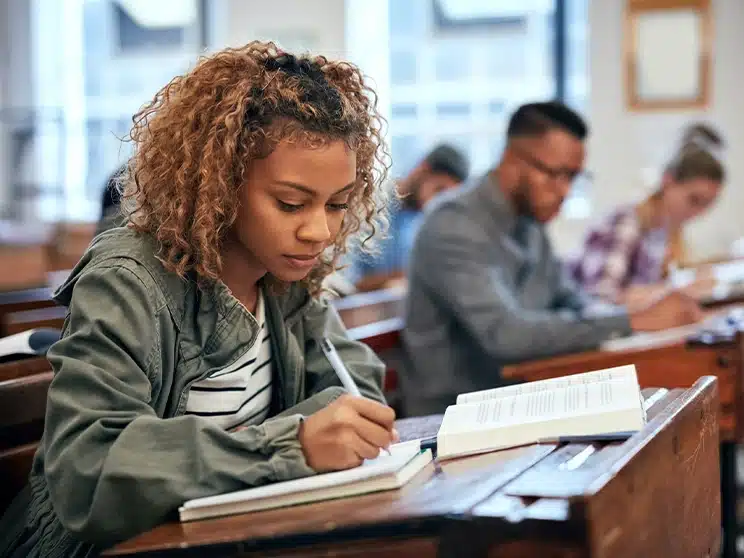Introduction
Welcome to 2024, where education is constantly evolving and new techniques are being developed to enhance student engagement and boost learning. In this blog post, we will explore some of the top student engagement techniques that educators can use to create a dynamic and interactive learning environment. These techniques are designed to captivate students’ attention, foster active participation, and ultimately improve their learning outcomes. Let’s dive in!
1. Gamification Student Engagement
One of the most effective student engagement techniques in recent years has been gamification. By incorporating elements of games into the learning process, educators can create a fun and interactive experience for students. Gamification can take many forms, such as points systems, leaderboards, badges, and rewards.
For example, a language teacher could create a vocabulary game where students earn points for correctly identifying words or phrases. The leaderboard can display the top scorers, creating a sense of competition and motivating students to actively participate in the game.
By gamifying the learning experience, educators can tap into students’ natural inclination for play and competition, making the material more enjoyable and memorable.
2. Project-Based Learning Student Engagement
Project-based learning is a student engagement technique that encourages students to actively apply their knowledge and skills to real-world projects. Instead of passively absorbing information, students are actively involved in the learning process by working on projects that are relevant and meaningful to them.
For example, instead of simply reading about the water cycle, students could be tasked with creating a model or conducting experiments to demonstrate their understanding of the concept. This hands-on approach not only enhances student engagement but also promotes critical thinking, problem-solving, and collaboration skills.
Project-based learning allows students to take ownership of their learning and see the practical applications of what they are studying. It also provides opportunities for creativity and innovation, as students have the freedom to explore different solutions and approaches to their projects.
3. Technology Integration Student Engagement
In today’s digital age, technology plays a crucial role in student engagement. Integrating technology into the classroom can help capture students’ attention and make learning more interactive and immersive.
There are numerous ways to incorporate technology into the learning process. For example, educators can use interactive whiteboards or projectors to display multimedia content, such as videos, animations, and simulations. This visual and auditory stimulation can enhance students’ understanding of complex concepts and make the learning experience more engaging.
Furthermore, online platforms and educational apps can be used to supplement classroom instruction. These tools provide opportunities for interactive learning, self-paced learning, and personalized feedback. For instance, students can use educational apps to practice math problems, receive instant feedback, and track their progress.
By leveraging technology, educators can create a dynamic and interactive learning environment that caters to the diverse learning styles and preferences of students.
4. Active Learning Strategies Student Engagement
Active learning strategies involve students in the learning process through hands-on activities, discussions, and collaborative tasks. These strategies move away from traditional lecture-style teaching and encourage students to actively participate and engage with the material.
One popular active learning technique is the flipped classroom model. In a flipped classroom, students are introduced to new concepts through pre-recorded lectures or readings outside of class. Classroom time is then dedicated to discussions, problem-solving, and activities that reinforce and apply the concepts.
Other active learning strategies include group work, case studies, role-playing, and debates. These strategies promote critical thinking, communication skills, and teamwork, while also making the learning experience more interactive and engaging.
By incorporating active learning strategies, educators can create a student-centered classroom where students take an active role in their own learning.
5. Differentiated Instruction Student Engagement
Every student has different strengths, interests, and learning styles. Differentiated instruction is a student engagement technique that recognizes and accommodates these individual differences.
Instead of using a one-size-fits-all approach, educators tailor their instruction to meet the diverse needs of their students. This may involve providing different learning materials, offering choices in assignments, or adapting teaching strategies to accommodate different learning styles.
For example, a science teacher may provide different reading materials at varying levels of complexity to cater to students with different reading abilities. Similarly, a language arts teacher may offer different writing prompts to allow students to choose topics that interest them.
By differentiating instruction, educators can create a supportive and inclusive learning environment where all students feel valued and engaged.
Conclusion
As we enter 2024, student engagement techniques continue to play a vital role in enhancing learning outcomes. By incorporating gamification, project-based learning, technology integration, active learning strategies, and differentiated instruction, educators can create dynamic and interactive learning environments that captivate students’ attention and foster their active participation.
These techniques not only make learning more enjoyable and memorable but also promote critical thinking, problem-solving, collaboration, and creativity. By embracing these student engagement techniques, educators can empower their students to become lifelong learners and prepare them for success in the ever-evolving world.
